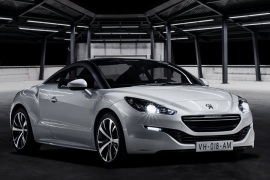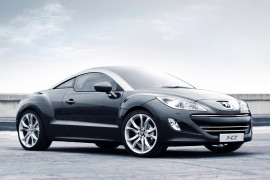PEUGEOT RCZ Models/Series Timeline, Specifications & Photos
First production year: 2009
Engines: Gasoline, Diesel
Body style: Coupé (two-door)
Peugeot refreshed its sporty RCZ lineup in 2013, preparing it for the upcoming Euro 6 emission standards that were due to enter in September 2014, and, besides some technical changes, it also tweaked its design and interior.
In 2009, the French automaker introduced the RCZ to compete against the more famous Audi TT. While it didn’t have the heritage of sporty coupe vehicles, it was known for its hot hatches. As a result, the French engineers took the platform from the 308 and made another bodywork on top of it. Unfortunately, they forgot to change the interior, and, as a result, the RCZ looked stunning from the outside but dull on the inside. The drama of highs and lows continued with the engine-chassis configuration, and that’s where the 2013 RCZ got big improvements.
While Volkswagen was credited for creating the hot-hatch segment with its Golf GTI, Peugeot was famous for its 205 GTi from the mid-80s. But that was a thing of the past when the French automaker introduced the RCZ in 2009. Unfortunately, it was a bad time to produce such a vehicle due to the world financial crisis. Nevertheless, the car manufacturer pushed forward and sold the vehicle on specific markets. By 2013, it was time for an upgrade. There was a new front fascia with two distinct grilles on the bumper instead of a large one as on its predecessor. Moreover, the carmaker’s badge was smaller and had a cleaner look, while the hood was also modified and featured shorter creases on it. The roofline kept the double-bubble appearance, suggesting that those were there to make room for racing helmets. They were not, but looked fine. From its profile, the RCZ boasted flared wheel arches on both axles. For the back of the car, Peugeot’s design team left the original ideas, albeit they altered the lenses for the taillights.
Inside, there was an increased sense of quality. It didn’t look like it carried over the cabin from its 308 sibling but from an upscale vehicle. The driver fronted a redesigned instrument cluster where the dials were encircled by chromed rims, and the TFT display placed between the tachometer and speedometer had a new, cleaner look. On the center stack, Peugeot used the same solutions and design as on the non-facelifted version but with better materials. Moreover, the door cards were redesigned and got new stitches that made them look better. While the front occupants were spoiled with high-bolstered bucket seats, those seated in the back had to share a narrow bench seat under a low ceiling due to the sloped-down roof line.
Underneath its skin, the RCZ boasted a new suspension setup with better coils and dampers. Unfortunately, the suspension system has struts up front and semi-independent arms out back. As a result, the car handled well on good pavement but punished its driver and occupants at every bump in the road.
Based on the 308 RCZ concept announced in 2007 at the Frankfurt Motor Show, the final version of the Peugeot RCZ was unveiled to the public in 2009 in the same place.
The RCZ was a good step forward for Peugeot, as it was hard to name a fun-to-drive car they had produced over the years.
Creating a completely different car, the RCZ was the first car not to have a “0” in its nameplate. Fact that actually meant the new sport-coupe had nothing to do with the other models in the range.
From the front, we could say that the RCZ was similar to the 308.
At the back, things drastically changed with the aggressive design. Rather unusual and easily noticeable from the rear, the RCZ had a double bubble roof and windscreen, features more specific to a concept car. However, Peugeot went far enough to even produce it, despite the increased costs.
Available with a diesel or a choice of several gasoline engines, the most powerful unit developed 200 hp and was mated with a manual transmission.
While you would expect the 200 ponies to provide great power, the performance was rather modest. Yes, the unit was smooth and had a good torque, but fast wasn’t really the adequate word.
Nobody can deny the RCZ’s great look and while the trial was a successful one, there was room for improvement in all aspects.

